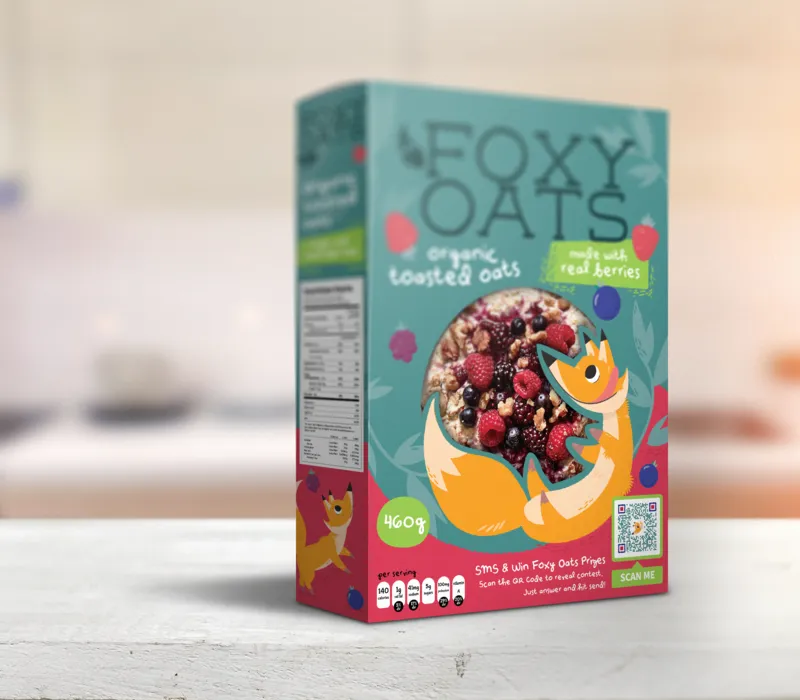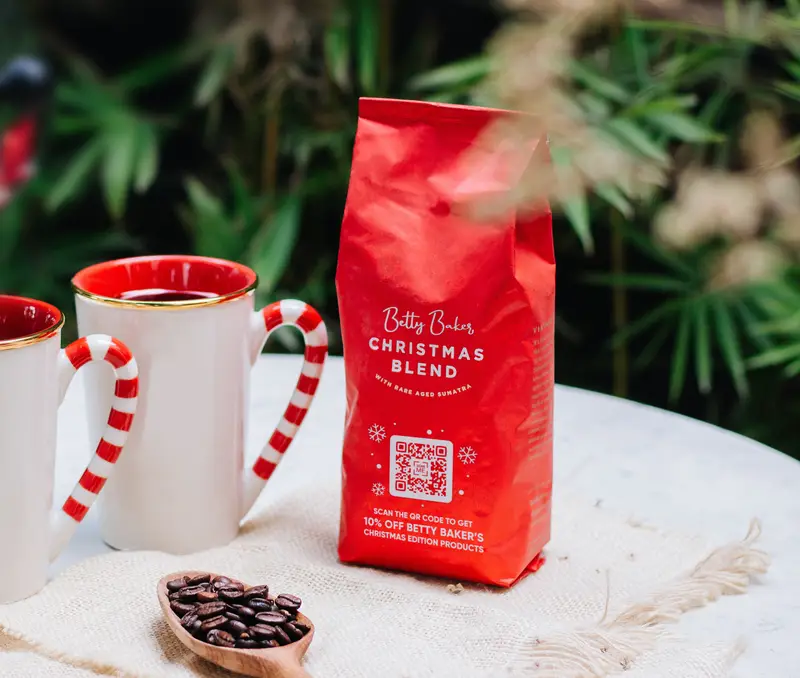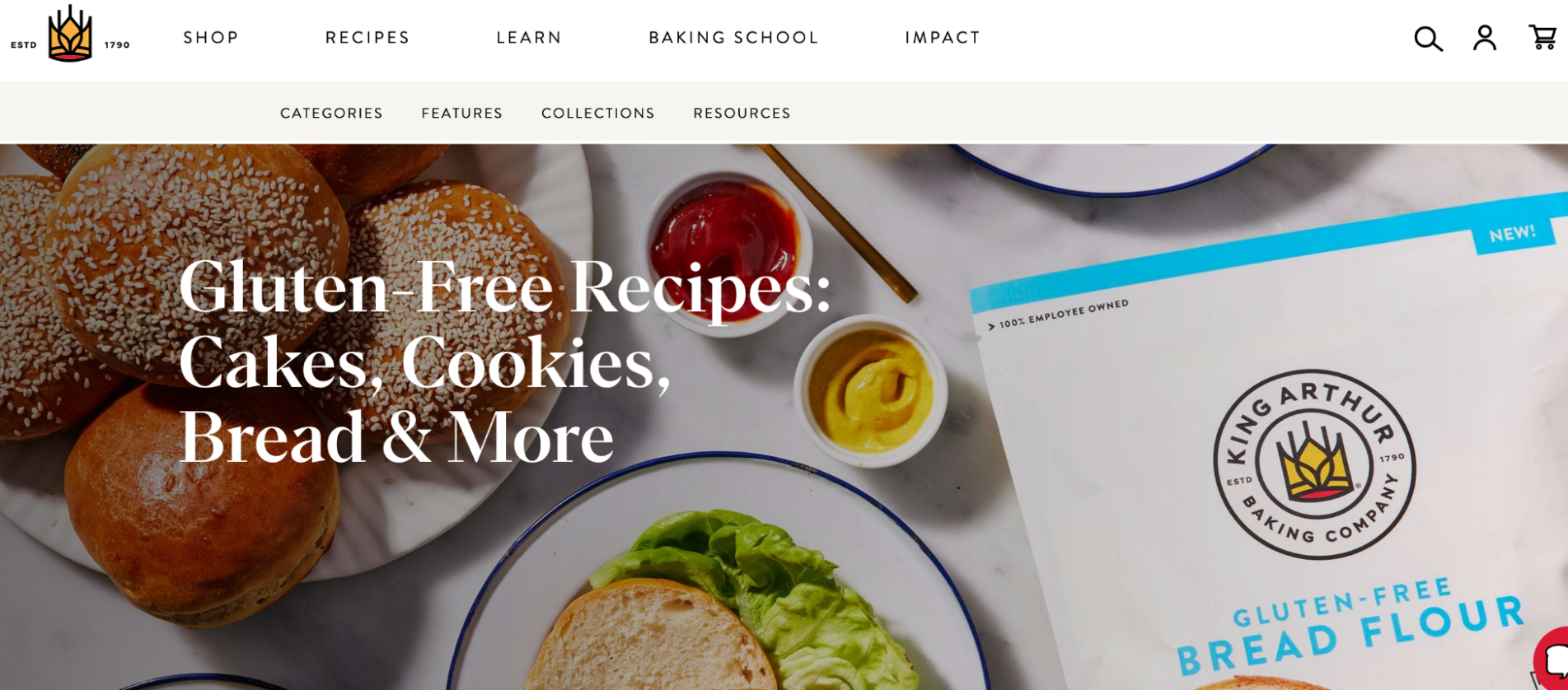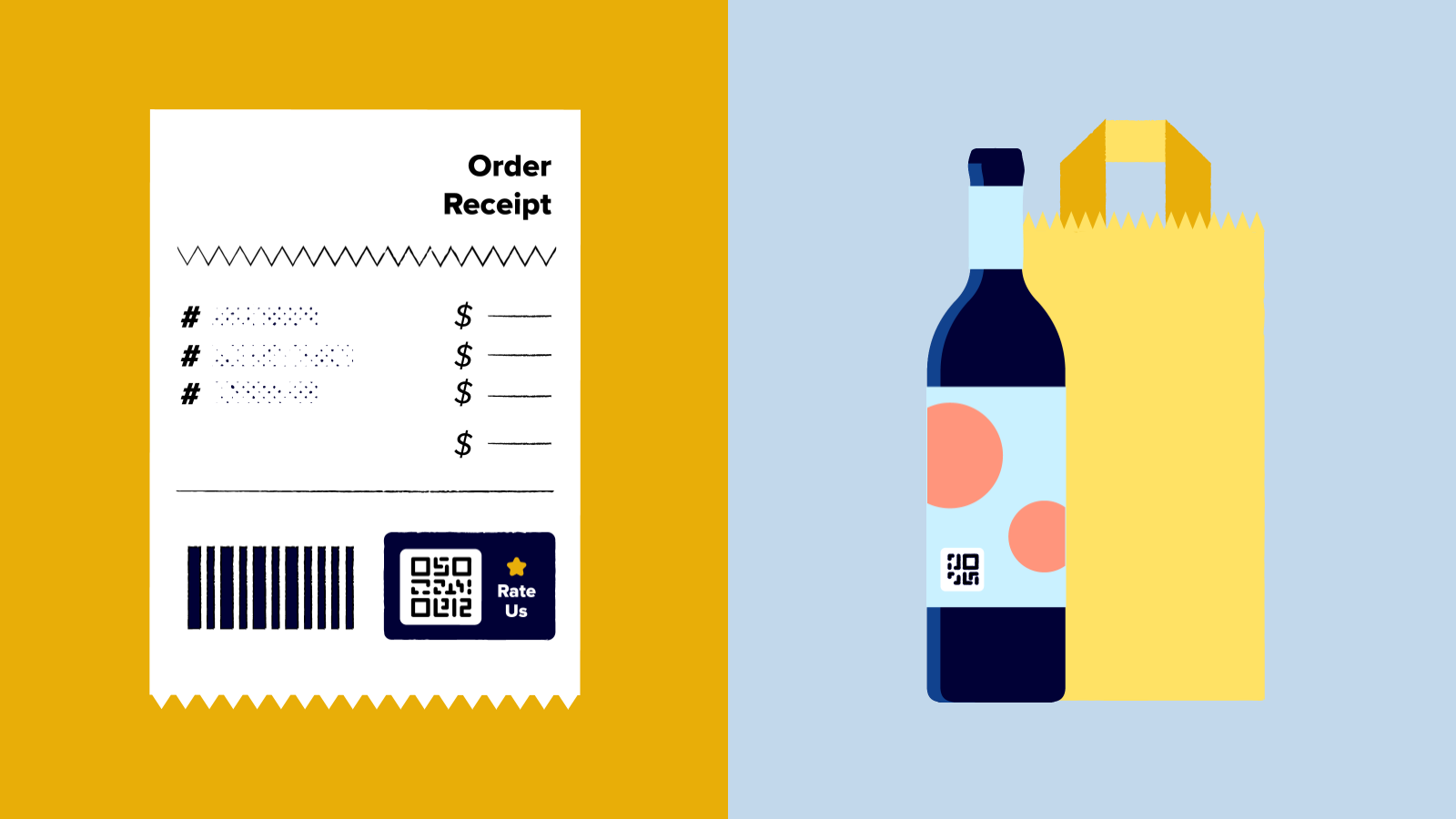How can brands selling everyday products connect with customers, increase sales consistently, and understand consumer preferences? QR Codes are here to save the day for consumer packaged goods (CPG) brands big and small.
Between smartphone scanning capabilities and the growing need for touch-free interactions in recent years, the use of QR Codes is higher than ever. According to our 2023 QR Code Trends Report, QR Code creation in the retail and CPG industries grew by 88% year-over-year. For CPG brands, now is the time to start embracing QR Codes as an essential tool for driving sales and building customer relationships—after all, it’s never too late to get in on the action!
Let’s explore what makes QR Codes an essential tool for CPG brands and how you can start using them today to drive revenue and establish direct connections with customers.
What makes QR Codes a CPG essential?
Every brand can reap the benefits of using QR Codes to bridge the physical and digital worlds, but they’re a must-have for CPG brands in particular. They enable swift, easy interactions with customers and allow brands to drive repeat purchases from any location, which is crucial in the fast-paced world of consumer goods. Here are some of the key benefits CPG brands unlock by integrating QR Codes into their strategies.
Increased interactions
That candy bar your customer is craving? $2.50. An instant chance to connect with them from every package they buy? That’s priceless. Without QR Codes, you might convince someone to type a URL into a browser to visit your website, but beyond that, you’d be hard-pressed to get many shoppers from the physical world to your digital channels.
With an instantly scannable QR Code placed on your product packaging, customers can access more information while shopping, after purchasing your product, or even when they see an advertisement from your brand. Because QR Codes drive digital engagement by linking offline experiences to online interactions, CPG brands can curate what happens on the other end of the scan based on their goals for every interaction. Make it easy for customers to understand the value you provide and continue the conversation with them to drive long-term loyalty.
Better customer experiences
Today’s typical consumer sees an average of 10,000 ads daily—in other words, they’re in a constant state of information overload. Your audience wants to “choose their own adventure,” seeking out information about your brand on their terms and preferred timeline. QR Codes offer those kinds of experiences by delivering information at the right time—like when they’re shopping and actively considering your product—and giving them agency to take the next step to learn more.
With QR Codes, you can share useful or interactive resources that draw them to your brand, which creates the kind of interactions that they want to have. That’s what it means to market in a way that deepens customers’ connection to your brand and creates an all-around better experience.

Customer behavior and insights
Every time a consumer scans a QR Code—for information, a discount, or to learn how to use a product—that brand gains information like which products shoppers engage with on shelves and what content excites them.
This data is key for understanding your audience as a whole. On an individual level, QR Code scans also help CPG brands drive more personalized experiences. You can recognize website visitors who scanned a code in the past, recommend products they might like, or remind them of a shopping cart they may have abandoned.
Data ownership
More often than not, CPG brands are at the mercy of the big-brand stores that stock their products—for shelf space, but also for access to customer data. Without a direct way to connect with customers, brands might struggle to understand their unique preferences and behaviors. This is where QR Codes come to the rescue.
Dynamic QR Codes reveal when and where each code was scanned, providing real-time information about in-store brand interactions. Plus, as a marketing channel that CPG brands control, QR Codes restore some of their ability to connect with and understand their customers straight from store shelves. This is especially important as Google deprecates third-party cookies in the coming months. Brands will soon lose much of the tracking capability this data collection method provides, but with QR Codes and the first-party data they offer, brands will regain some of the lost ground to drive better messaging, personalization, and offerings for their audience.
Supply chain efficiency
How many tools in your marketing stack also play a critical role in your supply chain management? Probably not many, but QR Codes are actually poised to become one of those tools soon.
By 2027, the CPG and retail industries will transition from 1D UPC barcodes to 2D barcodes, like QR Codes, in great part because of the vast amounts of information 2D barcodes can hold. When the industry-wide transition is complete, the new-and-improved barcodes won’t just contain a product’s Global Trade Item Number (GTIN). QR Codes can hold vast amounts of information like serial number, expiration date, updated pricing for discounts or clearance, and, of course, links to marketing resources.
This additional information will transform both inventory and supply chain management for brands and stores, offering major efficiency improvements.
Did you know? Here at Bitly, we recently announced that we’re increasing our investment in powering connections within the consumer packaged goods industry by supporting the implementation of GS1 Standards into our products. Read our announcement to learn more.
Flexibility
On one product, you might want to share more information about your sustainability initiatives. For another, you might want to link to recipes, sweepstakes, or partnership-driven content. QR Codes give you the flexibility to engage customers with the information that works best for a specific audience and product. And if you’re not sure where to start, you can do all of the above and point QR Code scans to a Link-in-bio page where customers can choose where to explore next themselves.
You can also use QR Codes across a wide range of customer touchpoints, from offline advertisements and in-store displays, to directly on product packaging and in video advertisements. Plus, when you use Dynamic QR Codes, you can also change the code’s URL whenever you need. This versatility is a major win for testing and data-gathering, seasonal offerings, and overall adaptability in your campaigns.
7 ways to increase sales using QR Codes
QR Codes are a flexible tool and a major advantage for CPG brands. With such a wide range of use cases, QR Codes are your Swiss army knife of modern marketing. Here are seven ways they can help you cut through the noise to reach consumers, all the while driving sales and boosting revenue.
1. Measure advertising impact
Historically, offline advertising channels like billboards, subway advertisements, or flyers have essentially been untrackable. Brands might have been able to estimate how many cars pass an ad next to a highway or how many subway riders see an ad daily. However, they really couldn’t quantify how many of those potential views drove actual awareness and product purchases in real time.
QR Codes give audiences a tangible way to take action from offline ads, and they let brands track each scan and understand consumer behavior. This data improves marketing performance by revealing which ad placements, calls to action, and messaging resonate with consumers to better drive awareness and sales. When CPG brands stay top of mind with marketing that sticks with their audience, they take up more space in buyers’ minds and wallets.
Need some inspiration? Learn how cat food brand Smalls used Bitly QR Codes in an out-of-home advertising campaign in New York City to drive subway riders to their website.
2. Connect to e-commerce platforms
For brands and shoppers alike, an easy path to digital offerings is a clear win. Customers might want to browse additional colors, order online instead of purchasing in-store, consult with a loved one before buying a gift, or buy an item that’s out of stock where they’re shopping. QR Codes placed on packaging give customers a quick and convenient way to check out online options with a single scan.
Every scan is a chance to deepen your relationship with potential customers. By sending them to shop online, CPG brands can gather first-party data, learn about customer preferences, and, of course, drive more purchases than in-store options would on their own.
Of course, product packaging and ads aren’t the only way to direct shoppers to e-commerce channels via QR Codes. A report by VAB recently found that over a third (36%) of viewers have scanned a shoppable TV ad, another channel that’s been historically difficult to measure—but now, brands can directly track the ROI of their ads and drive sales instantly.
3. Guide shopping decisions
Like it or not, shoppers are constantly comparing your product to the other options on shelves in front of them and online. They might be considering prices, ingredients, brand values like sustainability, or even just packaging design and colors. Wouldn’t you like to step into that conversation to help them make the best decision for their needs—which, of course, is preferably your product?
QR Codes let you join their decision-making journey by offering resources that help them make their decision in real-time. You might do this through content marketing like a product comparison guide, take them to product reviews, or invite them to a playful interaction like a decision-making tree or quiz. Whatever tactic you choose, you can help audiences make informed choices while keeping your say in the decision process—and steering them toward a purchase.
4. Provide quick, convenient coupons
Gone are the days of paper-and-scissor coupon-cutting sessions, making way for more convenient (and modern) avenues like scanning a digital version of the coupon to cash in on a discount.
CPG brands can boost immediate sales and simplify coupon redemption by offering a discount code through a QR Code on their product package—coupled with a compelling call to action, of course! When you make it easy for shoppers to say “yes” and create hassle-free interactions with your brand, you’ll drive sales and make them more likely to choose your brand again the next time they shop.

5. Try-before-you-buy offerings
Today’s shoppers want as much information as possible before they commit to buying. They read reviews, compare different options, and research brands’ production and ingredients. One way to help with this process and encourage a future purchase is through offering “try before you buy” options.
These can range from a sample of a product to a free or discounted trial of a subscription or recurring services. When you use QR Codes to invite shoppers to take advantage of these offerings, you gain data about what they’re interested in and encourage them to test a product they might love.
Skincare brand Curology uses Bitly QR Codes to encourage its customers to try new products for free by including an insert with a QR Code in each subscription box. The codes create a simple and easy experience and boost future sales of the products customers try.
6. Spark new subscriptions
Convenience is the name of the game for many consumers—40% rank it as their first or second most important factor when shopping. For products that customers purchase regularly like coffee, snacks, body products, or cleaning supplies, subscriptions are a great way for them to “set and forget” their purchases.
If you’re focused on driving customers to your subscription service, use QR Codes to easily convert passive in-store shoppers into loyal subscribers. This results in immediate revenue for your brand while offering customers a convenient way to purchase necessary items without worrying about restocking.
7. Share product pairings
From tasty recipes featuring multiple products from your brand to iconic makeup looks using several go-to items from your line, interactive content is a great way to boost sales and build relationships with your customers. Use QR Codes to show shoppers what they can do with your product—or even other products you offer that they might like—and inspire them to do it themselves.
King Arthur Baking has built a strong brand through several channels, including its enticing recipes on Instagram and QR Codes on its packages. For instance, its gluten-free bread flour package incorporates a QR Code that invites users to learn more about the product and browse gluten-free recipes. This engagement sparks customer loyalty by tapping into specialty baking needs and inspiring them to buy more King Arthur Baking products to make recipes that are just right for them.

Boost sales and build loyalty with QR Codes
For CPG brands, little moments make all the difference. A new offering that sparks an in-the-moment purchase, a fond memory with a favorite brand, or a clever ad that pops into their minds while shopping—your connections with customers are what keep them coming back to your brand over and over.
With every scan, QR Codes let you deepen audience relationships, create convenient and interactive experiences, and understand your customers. They give you the chance to turn offline moments into online engagement, bringing data, sales, and long-lasting loyalty along the way. Best of all, they’re soon to be the industry’s barcode of choice, which means they’ll greet consumers from every single package in the not-so-distant future. The only question left is, how will you use QR Codes to connect with your customers?




